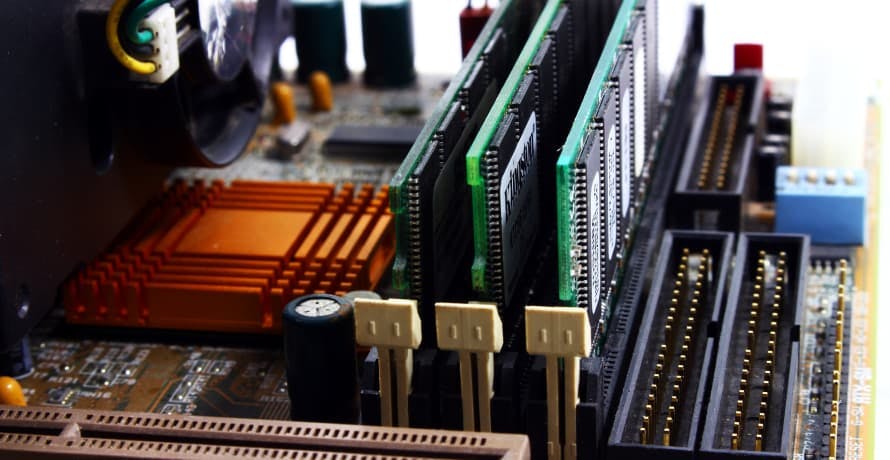ESG / CSR
Industries
Can Distributed Control Systems (DCS) Support Sustainability?



As we officially reach the post pandemic era, mass production is rising once more as people want to buy things to be out and about in the world again – and part of that industrialization is able to occur on the level that it does with the help of distributed control systems, or better known as DCS for short.
What are distributed control systems, or DCS, and how could they be used to support sustainability in the midst of global warming?
What is a Distributed Control System (DCS)?
A distributed control system, or DCS, is an automatically controlled industrial control system that makes use of geographical location to distribute control loops within a machine, control area, or a factory. Ultimately, a DCS is used to help regulate industrial activities and improve the affordability, reliability, and safety of these industrial endeavors – as mass production has allowed for the use of intense machinery to skyrocket production, and can become more difficult to manage.
A control system, which is what a DCS strives to take better control of, is a system of fixed electronic and mechanical devices that allow for other systems and devices to be used throughout control loops – which are systems that make up the hardware and software needed to rectify control systems. Industrial systems would be unable to function without a control system, therefore – making distributed control systems an imperative part of mass production and other various industrial activities.

How does a Distributed Control System (DCS) work?
A DCS is operated through the use of various mechanisms throughout an industrial site or factory such as with sensors, controllers, or computers. Each of these different working, moving parts of a DCS serve a purpose to ensure optimal running of control systems – such as by ensuring proper data storage, data collection, and efficient control processing.
However, as opposed to a traditional control system that uses multiple machines to operate – a DCS allows each individual part in a machine to have a controller to help run operations throughout the work site or factory. As a DCS can disperse itself through all moving parts within a factory or work site, it allows for better control and connectivity between the various parts – ultimately allowing for autonomous function and overall more efficient processes and production.
A DCS still functions with the supervision of an operator, meaning – the fate of a production line won’t be left entirely in the hands of a distributed control system.
👉 Ultimately, a DCS can help factories to have a more effective and efficient production process – even if a part of the DCS system is to fail (i.e., one machinery loses its autonomous function) the entire production will continue to operate.
This is the reason why DCS is used by many industries or plants, as even if one individual part is to fail – the facility will still operate. Other industries that make use of DCS include the agricultural industry, chemical plants, nuclear power plants, water and sewage treatments, food factories, automotive industries, and pharmaceutical manufacturing. Given a wide variety of industries make use of DCS, the market for distributed control systems has continued to grow – expected to climb to over $23 billion by 2026.

What are the pros and cons of a DCS?
A DCS can provide a power plant, work site, or factory with a large demand for mass production with a plethora of benefits – the most obvious one being its ability to function independently without worry if one working part is to stop working and implicate the rest of the production process entirely. In addition to this, other benefits of DCS include the opportunity to develop more complex structures as a DCS can allow for larger access of information despite the complexity of the project, system redundancy, more power over the process units and the ability to add more modules to a controller, and improve cybersecurity features that are often able to be implemented with the assistance of an operator or an engineer.
However, there are also downsides to implementing a DCS – such as an instance where one control’s failure could affect more than the loop the control was connected to. Also, a distributed control system could result in more expensive costs due to the need for software updates or when determining the problem throughout a DCS.
👉 Think of a DCS like having a cool, vintage piece of technology – while cool with many benefits, it also requires more upkeep and care to ensure its functionality.

How can a Distributed Control System (DCS) be good for sustainability?
A distributed control system isn’t just beneficial in terms of functionality, but it can also prove useful for companies or industries seeking to improve their sustainability.
Given that a DCS can help to ensure the efficiency throughout all of the processes to be executed in a facility or power plant, especially as technology continues to advance – DCS can help to promote sustainability as well with more productive technology that makes use of less, or renewable, energy. Since a DCS can help keep these processes moving, with DCS seeking to implement more measures to reduce energy consumption and improve energy efficiency – DCS could also be a means for industries and power plants to implement sustainability into their business models.
There are a few more reasons why a DCS could prove beneficial for sustainability – such as how a DCS can help companies adjust to energy prices with the software updates necessary with a DCS. Also, a DCA can help industries assimilate to new discrepancies in their supply chain – which can also ultimately help with sustainability.
DCS can also help to improve energy management throughout the automated processes and integrated controls, and even start to incorporate renewable energy sources to be powered. As automated technologies continue to become an imperative component to the clean energy transition, control systems like DCS will prove useful for industries like construction, supply chain management, and water treatment. In addition to this, the advancement of technology has shown to be a key player in the transition towards sustainability – as it can help businesses and factories to better manage all components of a control system and their carbon footprint.
👉 Ultimately, a DCS can help to improve sustainability in various industries, power plants, and factories as the automated technologies in DCs can help to improve energy efficiency and even promote the implementation of renewable energy sources.

How is DCS different from other industrial control technologies?
DCS isn’t the only type of automatic control system. For instance, PLCs, or programmable logic controllers, are another common type of control technology used throughout the industry. PLCs are smaller than distributed control systems and function like modular computers that are given specific instructions to complete a task. Similar to DCSes, PLCs are also used for multiple different industries – as they were initially created to replace things like timers and relays in factories.
PLCs are easy to use given they have no actual mechanical parts. However, the difference between a PLC and a DCS is that a PLC only controls individual devices – while a DCS has the capability to control more than one machine in a factory or power plant. A DCS is ultimately more versatile and functional than other automatic control systems like a PLC given DCSes are able to oversee all the machines within a factory or power plant due to its all encompassing connective nature throughout the area of production.
👉 More industrial control system technologies are remote terminal units, programmable automation controllers, general control servers, and intelligent electronic devices and sensors. However, a DCS has the opportunity to be more sustainable than most other automatic control systems given its ability to improve energy efficiency and implement the use of renewable energy.
How else can factories and work sites reduce their emissions without the use of a DCS?
Many multifaceted factories, power plants, and work sites have started to rely on the use of automatic control systems like DCS to improve reliability and productivity in their production processes – but a DCS isn’t the only way a business can reduce their emissions.
For instance, the power industry should strive to switch to the use of renewable energy to ensure the use of low-carbon options. In addition to this, carbon capture and storage systems should be utilized wherever financially possible – as they can help to remove the amount of carbon dioxide factories and power plants emit into the atmosphere. Also, ensuring that companies seek to make their supply chains more visible can not only improve efficiency – but also help in ensuring sustainability and a better functioning business overall.
Some could counter argue that a system like a DCS will not help to support sustainability given it is a piece of technology that must be implemented throughout an entire power plant or system, and is subject to use more energy and therefore create emissions. However, due to the fact that a DCS can help to improve efficiency and allow for the opportunity to implement renewable energy elsewhere throughout the factory, worksite, or power plant – a DCS can help to support sustainability in the long-run if these projects seek to use a DCS to its utmost potential.
Technology can be used one of two ways: as our enemy or our greatest ally. In the effort to implement greater sustainability in the tech industry as it continues to rise, power plants and factories that choose a DCS could theoretically fear it could hinder them in the process of reducing emissions and promoting sustainability. However, when DCS is used, updated accordingly, and well maintained – it could help factories and power plants on the path towards long-term sustainability.
What about Greenly?
If reading this article about Distributed Control Systems, or DCS, and if they can support sustainability has made you interested in reducing your carbon emissions to further fight against climate change – Greenly can help you!
Setting up the technology in your company to be more sustainable can be difficult, but Greenly’s got you covered – click here to book a demo and learn more about how we can help you to measure and reduce your various scope emissions.
Greenly can help you make an environmental change for the better, starting with a carbon footprint assessment to know how much carbon emissions your company produces.


